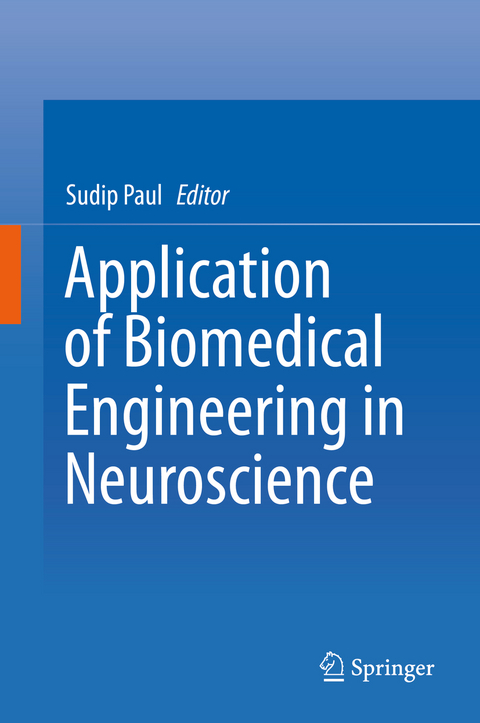
Application of Biomedical Engineering in Neuroscience
Springer Verlag, Singapore
978-981-13-7141-7 (ISBN)
In turn, the book summarizes the biomedical interventions that are used to understand the neural mechanisms underlying empathy disorders, and reviews recent advances in biomedical engineering for rehabilitation in connection with neurodevelopmental disorders and brain injuries. Lastly, the book discusses innovations in machine learning and artificial intelligence for computer-aided disease diagnosis and treatment, as well as applications of nanotechnology in therapeutic neurology.
Dr. Sudip Paul is currently an Assistant Professor at the Department of Biomedical Engineering, School of Technology, North-Eastern Hill University (NEHU), Shillong, India. He received his Ph.D. from the Indian Institute of Technology (Banaras Hindu University), Varanasi with a specialization in Electrophysiology and Brain Signal Analysis, and subsequently completed postdoctoral research in Computational Neuroscience under the Biotechnology Overseas Associateship scheme for scientists working in the North Eastern States of India, supported by the Department of Biotechnology, Government of India. He has organized several workshops and conferences, most notably the 29th Annual Meeting of the Society for Neurochemistry, India, and the IRBO/APRC Associate School 2017. He has published more than 90 international journal and conference papers and has filed four patents. A member of various societies and professional bodies, including the APSN, ISN, IBRO, SNCI, SfN, and IEEE, he received first prize in the Sushruta Innovation Award 2011, sponsored by the Department of Science and Technology, Government of India, and numerous other awards, including a World Federation of Neurology (WFN) travelling fellowship, Young Investigator Award, and IBRO and ISN Travel Awards. He also serves as an editorial board member for a number of international journals.
Module 1_ Introduction to Human Physiology.- Module 2_ Neural engineering - Module 3_ Introduction to Neurodegenerative and regenerative Disorders.- Module 4_ Brain images and it`s classifications.- Module 5_ EEG, EOG and their significance.- Module 6_ Artificial Intelligence and Computer Aided diagnosis.- Module 7_ Nanomaterials involved in therapeutic strategy.- Module 8_ Emotion, Stress and other Neurological dysfunctions.- Module 9_ Emotion, Stress and other Neurological dysfunctions.
| Erscheinungsdatum | 29.11.2019 |
|---|---|
| Zusatzinfo | 120 Illustrations, color; 28 Illustrations, black and white; XIII, 490 p. 148 illus., 120 illus. in color. |
| Verlagsort | Singapore |
| Sprache | englisch |
| Maße | 155 x 235 mm |
| Themenwelt | Medizin / Pharmazie ► Physiotherapie / Ergotherapie ► Orthopädie |
| Studium ► 1. Studienabschnitt (Vorklinik) ► Physiologie | |
| Naturwissenschaften ► Biologie ► Humanbiologie | |
| Naturwissenschaften ► Biologie ► Zoologie | |
| Technik ► Medizintechnik | |
| Technik ► Umwelttechnik / Biotechnologie | |
| Schlagworte | biomedical engineering • Human Physiology • Neurodynamics • neuroimaging • Neurorehabilitation • Neuroscience |
| ISBN-10 | 981-13-7141-5 / 9811371415 |
| ISBN-13 | 978-981-13-7141-7 / 9789811371417 |
| Zustand | Neuware |
| Haben Sie eine Frage zum Produkt? |
aus dem Bereich


